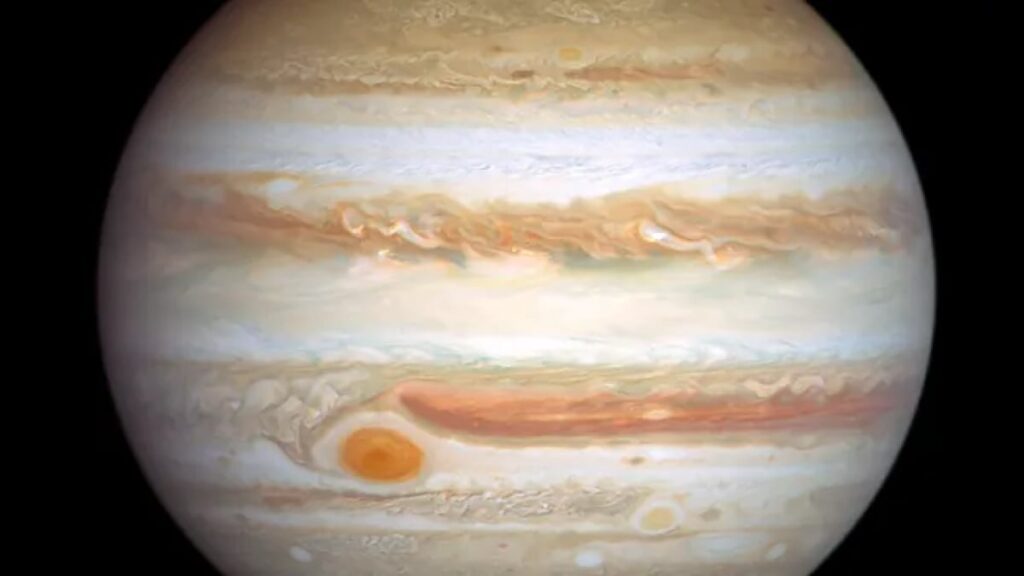NASA’s Hubble Space Telescope recently captured the unusual behavior of Jupiter’s Great Red Spot (GRS). This massive storm, big enough to engulf the Earth, has been active for over 150 years. For the first time, scientists have observed that it “shakes”, oscillating in size and changing in speed. The discoveries intrigued astronomers, as the motion had never been documented before. The storm’s recent activity, marked by this surprising instability, is puzzling experts and raising questions about what could be causing these changes.
Unpredictable movements have intrigued scientists
The Great Red Spot, which has been gradually shrinking over the past decade, has now shown unpredictable changes in its size, according to a paper published in The Planetary Science Journal. Astronomer Amy Simon, who led the observing team from NASA’s Goddard Space Flight Center, commented on this unexpected behavior.
According to Simon, scientists have always noticed small variations in its position, but the recent expansion and contraction surprised them. With Hubble’s advanced capabilities, they were able to confirm that the storm is not only changing in size, but also in speed.
Comparing movement to a sandwich
Mike Wong, a co-researcher at the University of California, Berkeley, told Space.com how the storm’s action affects the overstuffed sandwich. The GRS is pushed by the jet streams surrounding it, causing a bulge effect.
Wong also noted that the central region of the storm brightens during the largest oscillations, indicating changes in the planet’s upper atmosphere. This could indicate a reduction in the haze that usually covers the storm.
Potential stabilization of the Great Red Spot
Simon’s team believes the storm could eventually shrink enough to fit inside Jupiter’s wind belts, likely stabilizing its size. Until then, they will continue to closely monitor the GRS to gain better insight into one of the Solar System’s most fascinating weather patterns.


